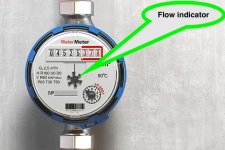I think my auto Fill pipe is leaking or the fitting is leaking.
The system is a MP Industries auto Fill. My pool fills up when the float valve is closed. I replaced it 2 times. Last time with a heavy duty one from float alvetec.com. Still keeps filling. If I shut off the water shut off it stops filling. I can't hear the float valve running when the shut off is in open position and pool reaches set level.
Thinking a fitting, or pipe is leaking. I actually think it may have been leaking a while but didn't notice as the summer weather evaporates the water faster than the leak.
On my pool tile I notice scale on the tile (beyond just on grout lines) that looks like it's cause from running water. Also mineral deposits on the edge of the concrete. It's only on the section by the auto Fill about 4 feet in both directions from the auto Fill.
Don't want to jack hammer concrete. Wondering if they can epoxy coat the inside of a 1/2 pipe and if someone can do that by access the pipe from the 8" opening?
Afraid the water can cause a gap betwen pool and soil. Also wondering why muddy water doesn't seem evident (if the pipe is leaking)
Don't see water Saturation stains on the concrete. I had the concrete coated and the dark spots are the coating wearing off or not wearing off
What are your thought s?
The system is a MP Industries auto Fill. My pool fills up when the float valve is closed. I replaced it 2 times. Last time with a heavy duty one from float alvetec.com. Still keeps filling. If I shut off the water shut off it stops filling. I can't hear the float valve running when the shut off is in open position and pool reaches set level.
Thinking a fitting, or pipe is leaking. I actually think it may have been leaking a while but didn't notice as the summer weather evaporates the water faster than the leak.
On my pool tile I notice scale on the tile (beyond just on grout lines) that looks like it's cause from running water. Also mineral deposits on the edge of the concrete. It's only on the section by the auto Fill about 4 feet in both directions from the auto Fill.
Don't want to jack hammer concrete. Wondering if they can epoxy coat the inside of a 1/2 pipe and if someone can do that by access the pipe from the 8" opening?
Afraid the water can cause a gap betwen pool and soil. Also wondering why muddy water doesn't seem evident (if the pipe is leaking)
Don't see water Saturation stains on the concrete. I had the concrete coated and the dark spots are the coating wearing off or not wearing off
What are your thought s?








